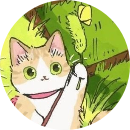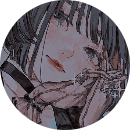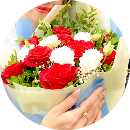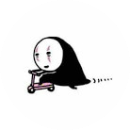Sophie colours this picture so neighbouring regions have the same colour. how many types of colours at the least does she need to use

Những câu hỏi liên quan
Sophie colours this picture so that no neighbouring regions has the same colour. How many types of colours at the least does she need to use.
sophie colors this picture so that no neighbouring regions have the same color. how many types of colors at the least?
các bn ghi cách làm ra nha, mik bít đáp án là 3 nhưng ko bít cách làm
Đúng 0
Bình luận (0)
câu này có đúg cấu trúc ko bạn,sophie làm j có nghĩa
Đúng 0
Bình luận (0)
Read the text below and choose the correct answer A, B, C or D to each question. Write your answers A, B, C or D on youranswer sheet.Different Colours can affect us in many different ways; that’s according to Verity Allen. In her new series ‘Colour meHealthy’, Verity looks at the ways that colours can influence how hard we work and the choices we make. They caneven change our emotions and even influence how healthy we are.‘Have you ever noticed how people always use the same colours for the sam...
Đọc tiếp
Read the text below and choose the correct answer A, B, C or D to each question. Write your answers A, B, C or D on your
answer sheet.
Different Colours can affect us in many different ways; that’s according to Verity Allen. In her new series ‘Colour me
Healthy’, Verity looks at the ways that colours can influence how hard we work and the choices we make. They can
even change our emotions and even influence how healthy we are.
‘Have you ever noticed how people always use the same colours for the same things?’ says Verity. ‘Our toothpaste
is always white or blue or maybe red. It’s never green. Why not? For some reason we think that blue and white is
clean, while we think of green products as being a bit disgusting. It’s the same for businesses. We respect a
company which writes its name in blue or black, but we don’t respect one that uses pink or orange. People who
design new products can use these ideas to influence what we buy.’
During this four-part series, Verity studies eight different colours, two colours in each programme. She meets
people who work in all aspects of the colour industry, from people who design food packets, to people who name
the colours of lipsticks. Some of the people she meets clearly have very little scientific knowledge to support their
ideas, such as the American ‘Colour Doctor’ who believes that serious diseases can be cured by the use of
coloured lights. However, she also interviews real scientists who are studying the effects of green and red lights on
mice, with some surprising results.
Overall, it’s an interesting show, and anyone who watches it will probably find out something new. But because
Verity is goes out of her way to be polite to everyone she meets on the series, it is up to the viewers to make their
own decisions about how much they should believe.
1. What is the writer doing in this text?
A. giving information about how colours influence us
B. reporting what happens in a new television series
C. giving information about a television presenter
D. giving his opinion of a recent television show
2. Which of the following shows the probable content of the four shows?
A. Part 1 – Health; Part 2 – Products and Industry; Part 3 – Emotions; Part 4 – Decisions
B. Part 1 – Blue and Black; Part 2 – Red and Orange; Part 3 – White and Grey; Part 4 – Green and Yellow
C. Part 1 – Meeting Designers; Part 2 – Meeting People who Name Colours; Part 3 – Meeting Doctors; Part
4 – Meeting Scientists
D. Part 1 – Cleaning Products; Part 2 – Make-up; Part 3 – Clothes; Part 4 – Food
3. According to Verity, why is a knowledge of colour important?
A. It can help you to choose the best products.
B. It can give you new ideas.
C. It can help you to change people’s minds.
D. It can help you to sell products.
4. Who does the writer respect least?
A. Verity Allen B. The people who name lipsticks
C. The ‘Colour Doctor’ D. The scientists who work with mice
5. The word “Overall” in paragraph 4 is closest in meaning to _______.
A. Generally B. Partially C. Rarely D. Readily
Different Colours can affect us in many different ways; that’s according to Verity Allen. In her new series ‘Colour me Healthy’, Verity looks at the ways that colours can influence how hard we work and the choices we make. They can even change our emotions and even influence how healthy we are. ‘Have you ever noticed how people always use the same colours for the same things?’ says Verity. ‘Our toothpaste is always white or blue or maybe red. It’s never green. Why not? For some reason we...
Đọc tiếp
Different Colours can affect us in many different ways; that’s according to Verity Allen. In her new series ‘Colour me Healthy’, Verity looks at the ways that colours can influence how hard we work and the choices we make. They can even change our emotions and even influence how healthy we are.
‘Have you ever noticed how people always use the same colours for the same things?’ says Verity. ‘Our toothpaste is always white or blue or maybe red. It’s never green. Why not? For some reason we think that blue and white is clean, while we think of green products as being a bit disgusting. It’s the same for businesses. We respect a company which writes its name in blue or black, but we don’t respect one that uses pink or orange. People who design new products can use these ideas to influence what we buy.’
During this four-part series, Verity studies eight different colours, two colours in each programme. She meets people who work in all aspects of the colour industry, from people who design food packets, to people who name the colours of lipsticks. Some of the people she meets clearly have very little scientific knowledge to support their ideas, such as the American ‘Colour Doctor’ who believes that serious diseases can be cured by the use of coloured lights. However, she also interviews real scientists who are studying the effects of green and red lights on mice, with some surprising results.
Overall, it’s an interesting show, and anyone who watches it will probably find out something new. But because Verity is goes out of her way to be polite to everyone she meets on the series, it’s up to the viewers to make their own decisions about how much they should believe.
27. What is the writer doing in this text?
A. giving information about how colours influence us
B. reporting what happens in a new television series
C. giving information about a television presenter
D. giving his opinion of a recent television show
28. According to Verity, why is a knowledge of colour important?
A. AA. It can help you to choose the best products. B. It can give you new ideas.
C. It can help you to change people’s minds. D. It can help you to sell products.
29. Who does the writer respect least?
A
A. Verity Allen B. The people who name lipsticks
C. The ‘Colour Doctor’ D. The scientists who work with mice
30. Which of the following would make a good title for the text?
A. Enjoy it, but don’t believe everything.
B. Another great show from Verity Allen! Five Stars!
C. Don’t miss this if you work in Business!
D. Watch this programme! It will make you healthy!
Different Colours can affect us in many different ways; that’s according to Verity Allen. In her new series ‘Colour me Healthy’, Verity looks at the ways that colours can influence how hard we work and the choices we make. They can even change our emotions and even influence how healthy we are.
‘Have you ever noticed how people always use the same colours for the same things?’ says Verity. ‘Our toothpaste is always white or blue or maybe red. It’s never green. Why not? For some reason we think that blue and white is clean, while we think of green products as being a bit disgusting. It’s the same for businesses. We respect a company which writes its name in blue or black, but we don’t respect one that uses pink or orange. People who design new products can use these ideas to influence what we buy.’
During this four-part series, Verity studies eight different colours, two colours in each programme. She meets people who work in all aspects of the colour industry, from people who design food packets, to people who name the colours of lipsticks. Some of the people she meets clearly have very little scientific knowledge to support their ideas, such as the American ‘Colour Doctor’ who believes that serious diseases can be cured by the use of coloured lights. However, she also interviews real scientists who are studying the effects of green and red lights on mice, with some surprising results.
Overall, it’s an interesting show, and anyone who watches it will probably find out something new. But because Verity is goes out of her way to be polite to everyone she meets on the series, it’s up to the viewers to make their own decisions about how much they should believe.
27. What is the writer doing in this text?
A. giving information about how colours influence us
B. reporting what happens in a new television series
C. giving information about a television presenter
D. giving his opinion of a recent television show
28. According to Verity, why is a knowledge of colour important?
A. AA. It can help you to choose the best products. B. It can give you new ideas.
C. It can help you to change people’s minds. D. It can help you to sell products.
29. Who does the writer respect least?
A
A. Verity Allen B. The people who name lipsticks
C. The ‘Colour Doctor’ D. The scientists who work with mice
30. Which of the following would make a good title for the text?
A. Enjoy it, but don’t believe everything.
B. Another great show from Verity Allen! Five Stars!
C. Don’t miss this if you work in Business!
D. Watch this programme! It will make you healthy!
Đúng 2
Bình luận (0)
Read the text. Write the names of colours 1–6 on the colour wheel. Which colours are primary and which are secondary?1. yellow – primaryThe Colour WheelHave you ever thought about how colours are related? Why do some colour combinations look good and others don’t ?According to Isaac Newton, white light consists of all the colours of the rainbow. Newton then arranged them in a circle of warm and cool categories.Red, blue and yellow are the three primary colours on the colour wheel. By mixing two...
Đọc tiếp
Read the text. Write the names of colours 1–6 on the colour wheel. Which colours are primary and which are secondary?
1. yellow – primary
The Colour Wheel
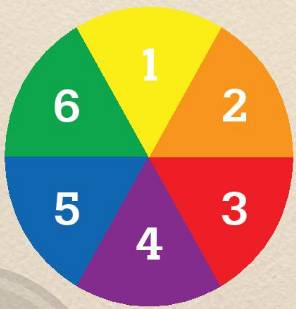
Have you ever thought about how colours are related? Why do some colour combinations look good and others don’t ?
According to Isaac Newton, white light consists of all the colours of the rainbow. Newton then arranged them in a circle of warm and cool categories.
Red, blue and yellow are the three primary colours on the colour wheel. By mixing two primary colours, we’ve got the secondary colours green, orange and purple.
Colours can also be harmonious or complementary. Complementary colours are directly opposite each other, like red and green. Harmonious colours sit next to each other on the wheel.
Famous artists and decorators have used the colour wheel to choose the right colours ever since then. Everyone agrees that colours can affect our feelings. A vibrant red, for example, is often associated with anger or danger, while yellow is a happy colour. Blue can make people feel calm; pastel pink, which is a gentle pink, sometimes makes them think of romance, and green is the colour of nature.
What’s your favourite colour? What do you associate it with?
1. yellow - primary
2. orange - secondary
3. red - primary
4. purple - secondary
5. blue - primary
6. green - secondary
Đúng 0
Bình luận (0)
38. He is _______my father, but he looks young.A. the same age of B. as old C. the same age as D. so old as39. Y ou can see many interesting in that art gallery.A. paints B. colours C. portraits D. paper40. The ring is ______that one. How much does it cost?A. as expensive B. so expensive as C. as expensive as D. as expensively as41. The story is very interesting. I ______ it several times.A. have read B. am reading C. read D. haven’t read42. We ______. to New York last summer.A. flew B. we’re go...
Đọc tiếp
38. He is _______my father, but he looks young.
A. the same age of B. as old C. the same age as D. so old as
39. Y ou can see many interesting in that art gallery.
A. paints B. colours C. portraits D. paper
40. The ring is ______that one. How much does it cost?
A. as expensive B. so expensive as C. as expensive as D. as expensively as
41. The story is very interesting. I ______ it several times.
A. have read B. am reading C. read D. haven’t read
42. We ______. to New York last summer.
A. flew B. we’re going to fly C. we’re flying D. have flown
43. She always talks in class. ______
A. So is Mai B. Mai is, too C. So does Mai D. Neither is Mai
44. I never watch ballet, and my sister doesn’t .
A. too B. so C. either D. like that
45. Teenagers in Viet Nam like K-pop, and they like Korean films .
A. too B. either C. so D. however
46. Today, subjects like music and arts are put into the school in Viet Nam.
A. school year B. subjects C. curriculum D. education
47. They are cutting grass in the garden. ______
A. I am, too B. So do I C. I do either D. I do neither
48. Arts are of great in education, especially for young children.
A. important B. importance C. unimportant D. unimportance
49. Classical music is not as pop music.
A. as exciting B. as excited C. exciting D. more excited
50. This film is not long as the film I watched last week.
A. as B. but C. either D. too
38. He is _______my father, but he looks young.
A. the same age of B. as old C. the same age as D. so old as
39. Y ou can see many interesting in that art gallery.
A. paints B. colours C. portraits D. paper
40. The ring is ______that one. How much does it cost?
A. as expensive B. so expensive as C. as expensive as D. as expensively as
41. The story is very interesting. I ______ it several times.
A. have read B. am reading C. read D. haven’t read
42. We ______. to New York last summer.
A. flew B. we’re going to fly C. we’re flying D. have flown
43. She always talks in class. ______
A. So is Mai B. Mai is, too C. So does Mai D. Neither is Mai
44. I never watch ballet, and my sister doesn’t .
A. too B. so C. either D. like that
45. Teenagers in Viet Nam like K-pop, and they like Korean films .
A. too B. either C. so D. however
46. Today, subjects like music and arts are put into the school in Viet Nam.
A. school year B. subjects C. curriculum D. education
47. They are cutting grass in the garden. ______
A. I am, too B. So do I C. I do either D. I do neither
48. Arts are of great importance in education, especially for young children.
A. important B. C. unimportant D. unimportance
49. Classical music is not as exciting as pop music.
50. This film is as not long as the film I watched last week.
Đúng 0
Bình luận (0)
38. He is _______my father, but he looks young.
A. the same age of B. as old C. the same age as D. so old as
39. Y ou can see many interesting in that art gallery.
A. paints B. colours C. portraits D. paper
40. The ring is ______that one. How much does it cost?
A. as expensive B. so expensive as C. as expensive as D. as expensively as
38. He is _______my father, but he looks young.
A. the same age of B. as old C. the same age as D. so old as
39. Y ou can see many interesting in that art gallery.
A. paints B. colours C. portraits D. paper
40. The ring is ______that one. How much does it cost?
A. as expensive B. so expensive as C. as expensive as D. as expensively as
CHÚC BẠN HỌC TỐT! ♪
Đúng 1
Bình luận (0)
Read the following passage and mark the letter A, B, C or D on your answer sheet to indicate the correct answer to each of the questions.Early humans saw a variety of natural colours around them, from the browns and greens of the soil and plants to the deep blues and red of the sky. They painted their bodies with colours from nature to signal aggression toward an enemy, or to make themselves attractive to a mate.A girl and a rainbow of crushed ice flavors at Chowpatty Beach, India. Over the cent...
Đọc tiếp
Read the following passage and mark the letter A, B, C or D on your answer sheet to indicate the correct answer to each of the questions.
Early humans saw a variety of natural colours around them, from the browns and greens of the soil and plants to the deep blues and red of the sky. They painted their bodies with colours from nature to signal aggression toward an enemy, or to make themselves attractive to a mate.
A girl and a rainbow of crushed ice flavors at Chowpatty Beach, India. Over the centuries, the sources of colours such as blue, purple, and red were high valued and they were often worth as much as gold. In the 19th century, a young chemistry student manufactured the first synthetic dye, and suddenly the world became a much more colorful place. In the 20th century, scientists discovered the psychological effects of colours, and people found ways to use this discovery to influence our feelings and behaviors.
RED
Red, colour of blood, symbolises fire, love and anger. In Eastern cultures, people believe it brings luck, wealth and success. In humans, the color red can send different messages. Some people redden, for example, when they are angry or embarrassed. Researchers have discovered that in sports the team that is wearing red is more likely to win. Why? Because red seems to be the color that signals dominance, giving those dressed in red an advantage in sporting events. In many animal species (including humans), contact with this bold color causes the heart rate to increase. However, one of red’s lighter shades, pink, can have the opposite effect on people. Man in prisons are less agressive when the walls are a specific shade of pink.
YELLOW
Yellow, the colour that comes to mind when we think of sunshine, is found throughout nature and the man-made world as a colour that commands attention; indeed, it is one of the easiest colours to see. This highly visible shade is found on everything from school buses to traffic signs and pens that we use to highlight important information in a text. The colour is also used to caution people; football players, for example, are shown a yellow card as a reminder to behave. It can be used as a stimulant as well: in a number of studies, yellow has been found to help children focus on their work and do better at school.
BLUE
Blue, the colour of the sky and sea, is associated in many cultures with water, religious objects, and protection against evil. Its darker shades represent calm, stability and power. Dark blue, for example, is the colour of the business suit or police uniform; it tells others, ‘I am in control,’ or ‘I am trustworthy.’ Blue is also associated with sadness. It’s common in English, for example, when you are feeling sad or depressed, to talk about ‘feeling blue,’ while in Iran, blue is the colour of mourning, worn when a person dies. Like pink, blue has a calming effect on people. Rooms painted blue help people to relax or sleep. Sleeping pills are often coloured blue to suggest exactly this idea. This colour also seems to reduce feelings of hunger. Blue food is rarely seen in nature, and when it is, such food is usually no longer healthy to consume. It’s just one more example of the power that colour can hold over us.
According to the pasage, the colour red______.
A. is believed to embarrass people
B. gives an advantage to team members who wear it.
C. symbolises bad luck
D. makes people less aggressive.
Đáp án B
Kiến thức: Đọc hiểu
Giải thích:
Theo đoạn văn, màu đỏ
A. được tin rằng làm cho người ta xấu hổ
B. mang lại lợi thế cho các thành viên trong nhóm mặc nó
C. tượng trưng cho sự không may mắn
D. làm cho người ta ít hăng hái
Thông tin: Researchers have discovered that in sports the team that is wearing red is more likely to win. Why? Because red seems to be the color that signals dominance, giving those dressed in red an advantage in sporting events.
Đúng 0
Bình luận (0)
BÀI 7. Read the passage and choose the best answer.Artists use colour to create patterns. Colour can also show different moods. Bright colours make us feel happy and energetic. Dark colours make us feel calm or sad.The primary colours are red, yellow, and blue. They are the colours that can be mixed together to make different colours. Mixing two primary colours makes a secondary colour. The secondary colours are orange, green, and violet. Orange is made by mixing yellow and red. Green is made by...
Đọc tiếp
BÀI 7. Read the passage and choose the best answer.
Artists use colour to create patterns. Colour can also show different moods. Bright colours make us feel happy and energetic. Dark colours make us feel calm or sad.The primary colours are red, yellow, and blue. They are the colours that can be mixed together to make different colours. Mixing two primary colours makes a secondary colour. The secondary colours are orange, green, and violet. Orange is made by mixing yellow and red. Green is made by mixing yellow and blue. Violet is made by mixing red and blue. Intermediate colours can be made by mixing two primary colours and a secondary colour together. Some intermediate colours are blue violet and red orange. Black, white, and gray are special colours. They are called neutral colours.
Colours have been organised into a colour wheel. It shows the three primary colours, the three secondary colours, and the six intermediate colours. Artists use the colour wheel to help them know which colours they want to use together.
- primary (adj): co bản - secondary (adj): thứ cấp
- intermediate (adj): trung gian - neutral (adj): trung tính
1. What is the passage mainly about?
A. Primary colours, secondary colours and intermediate colours
B. The ways to mix colours
C. Colour and its effects on our mood
D. Some basic information about colour
2. Which of the following is the correct way to make red orange from the three primary colours?
A. Mix red and yellow, then mix the new colour with red.
B. Mix yellow and blue, then mix the new colour with red.
C. Mix red and blue, then mix the new colour with yellow.
D. Mix the three primary colours.
3. According to the passage, white is a.
A. special colour B. neutral colour C. Both A and B D. None of above
4. Which of the following can't be found in the colour wheel?
A. Red orange B. Green C. Yellow D. Black
5. We can learn from the passage that.
A. happy and energetic people like bright colours
B. the colour wheel has 12 colours
C. we can also mix different colours to make the primary colours
D. artists are the best ones to know and use colour
Câu 1:A
Câu 2: B
Câu 3: C
Câu 4: D
Câu 5: D
Đúng 1
Bình luận (0)






